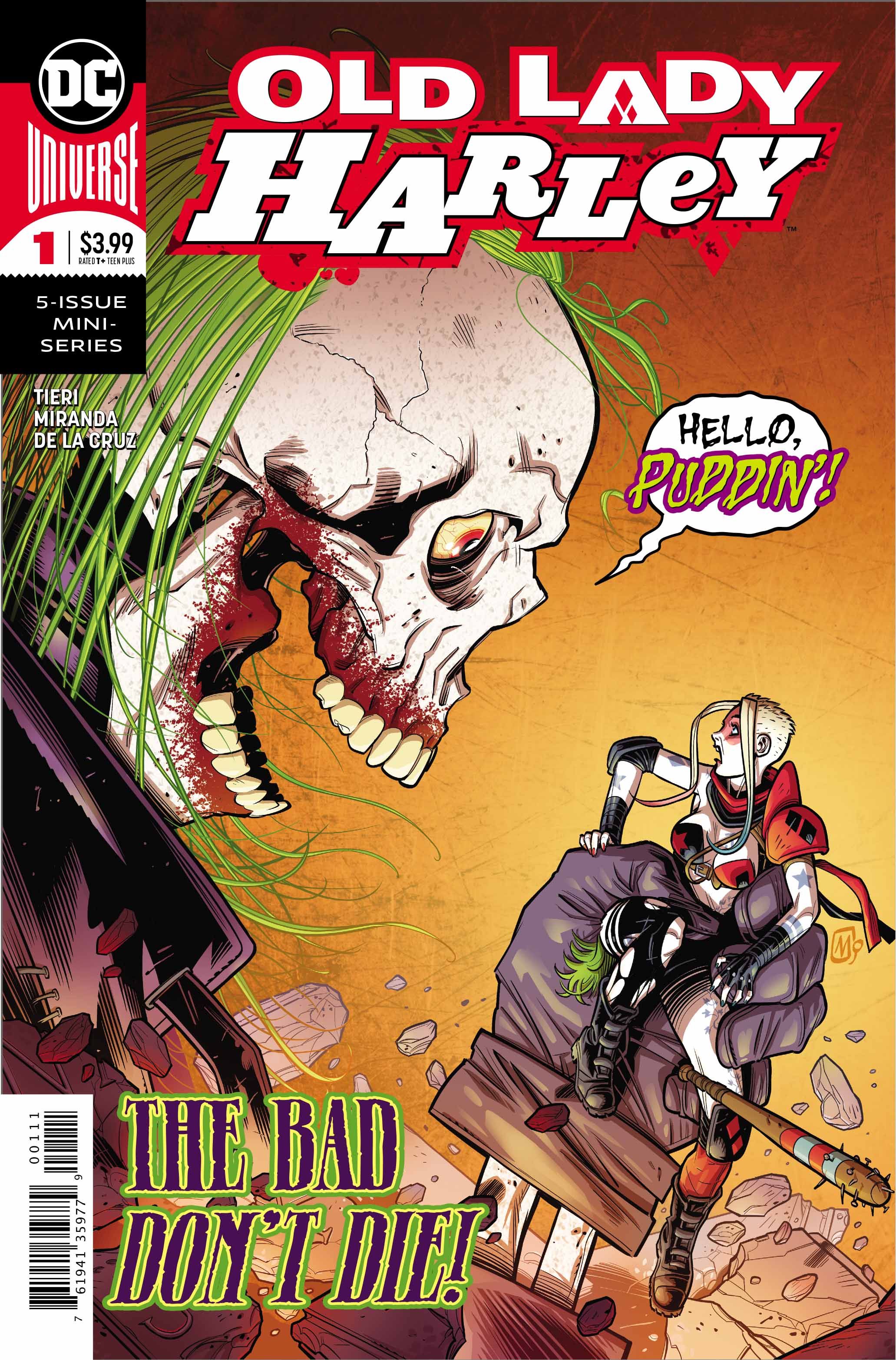Old Lady Harley #1
- WRITER
- Frank Tieri
- Artist
- Inaki Miranda
- Letterer
- Dave Sharpe
- Cover Artist
- Alain Mauricet
- Publisher
- DC Comics
- Price
- 3.99
- Release Date
- 2018-10-24
- Colorist
- Eva De La Cruz
Every few years, comic fans are treated to stories about older versions of their favorite characters reclaiming the glory of their youths. The first (or at least the most influential) example of this was Frank Miller's 1986 watershed miniseries, The Dark Knight Returns, which would become the benchmark for this weird microcosm of graphic storytelling. Borrowing heavily from both the western and science fiction genres, the story trope of "one last job" became très chic during the aughts in superhero comics.
We saw the much maligned sequel to Miller's first Dark Knight outing, The Dark Knight Strikes Again, as well as Kaare Andrews' Spider-Man: Reign (which is as controversial as it is ambitious), and the story line "Old Man Logan" by Mark Millar and Steve McNiven, which is masterful until the last chapter where gratuitous violence is mistaken for catharsis.
RELATED: INTERVIEW: Old Lady Harley is All ‘About the Harley/Joker Relationship’
The latter of these would go one to be loosely adapted into the hit film Logan, which only furthered the popularity of old superheroes donning their capes for what might be their final ride into the sunset. These stories will continue to be written as they give creators and fans a wonderful moment of connectivity to collectively ponder the "what if?" of possible futures for our favorite characters. Now, DC Comics is giving one of their most widely exposed characters a similar treatment (well, sort of) in the miniseries Old Lady Harley.
Harley Quinn is a character who is unavoidable, having firmly implanted herself in the cultural zeitgeist for better or worse (much like with Deadpool, your mileage may vary with Harley depending on how well you gravitate toward her humor). The popularity of the character has been rampant since her introduction in Batman: The Animated Series, and was galvanized for wider audiences by Margot Robbie's live action portrayal of Harley in the 2016 film Suicide Squad.
With Old Lady Harley #1, writer Frank Tieri (Harley Quinn and Her Gang of Harleys) and artist Inaki Miranda (Ragman) have utilized the character as a conduit to lovingly poke fun of the comic subgenre this version of the clown princess of crime is inhabiting.
Old Lady Harley #1 comes hot off the heels of this version of the character's introduction in Harley Quinn #42. Roaming the wastelands of America with Red Tool, Harley Quinn takes the reader through myriad encounters with increasingly bizarre foes. Tieri fills each set piece with a ton of puns, meta-humor, and over-the-top action, most of which work well. The whole ordeal feels like a sugar-injected version of The Road Warrior, in the best sort of way. The plotting does seem a bit listless at times, but the issue ends with a awesome reveal and promises something bigger.
RELATED: A Deadpool 2 Star Wants a Crossover with Harley Quinn
First issues in miniseries are often hampered with being the pillar to hold the rest of the series up. Sometimes this means filling it full of world-building and backstory. Old Lady Harley #1 does the former well enough, but slacks a touch on the latter.
But this can be overlooked. A concept of an older Harley Quinn battling insane post-apocalyptic gangs and monsters (each with their own special shtick) is so bonkers, some narrative gaps can be forgiven. The fact a character like Harley Quinn is not know for her stoicism like Batman or Wolverine truly allows her to bring something new to the table. Who says dystopian worlds can't be fun?
Inaki Miranda's art picks up what little slack there was and elevate the issue. So much of what makes Old Lady Harley #1 feel like a lived in world is due to his attention to detail. Quirky signage and background messages are abound and add a lot of visual humor to the book (the "Kraken Barrel" restaurant sign got a chuckle from us, big time). Eva De La Cruz's colors also helps things pop on the page. From the grey palette she uses in Harley's flashbacks to the brown-tones when the characters traverse the wastelands, every choice works.
Overall, It's hard to say if this series will stack up to its predecessors in the same subgenre after just one issue, but it does seem to have very a different voice, one that is less somber and far more subversive. Tieri and Miranda are doing great work here and seem like they're having a blast playing in this world. That kind of energy is enough to keep us invested and wanting more. It's also great to see a female character drive a story that has traditionally been mired in masculinity. Flipping the script this way only further subverts the "retired gunslinger" vibe stories like The Dark Knight Returns and "Old Man Logan" exuded so aggressively.

